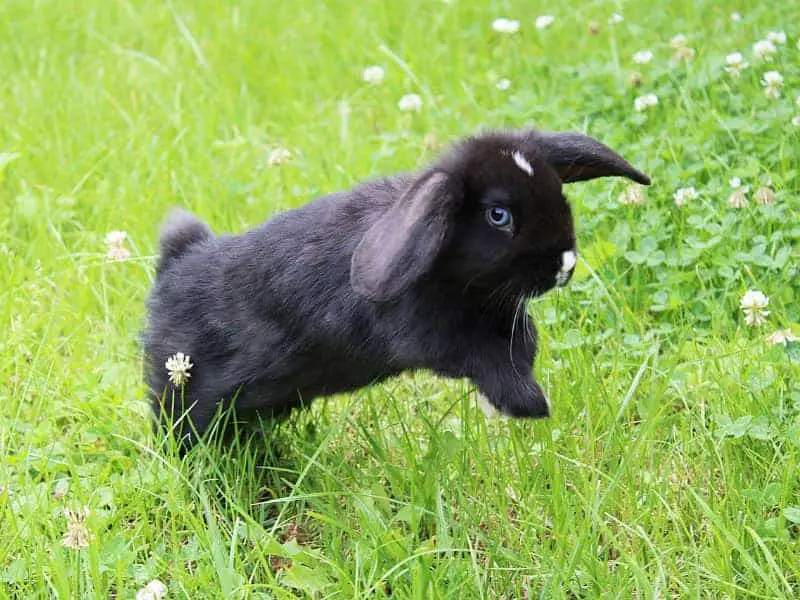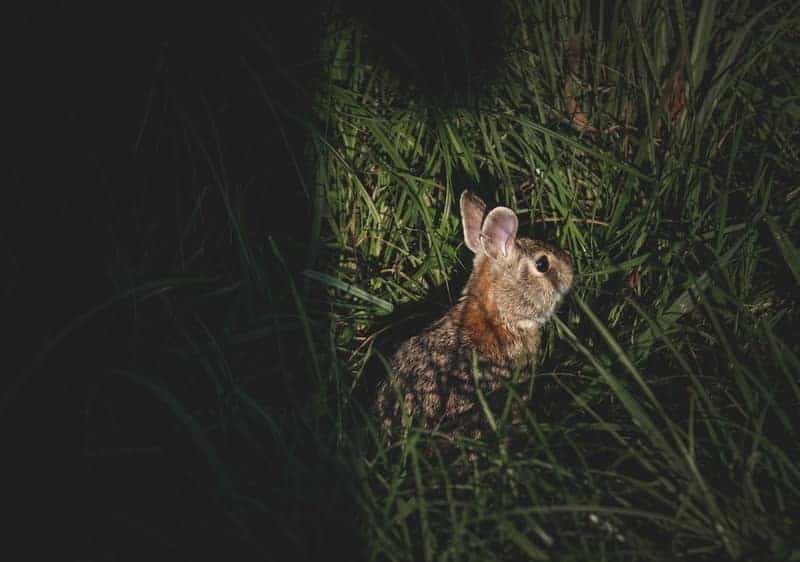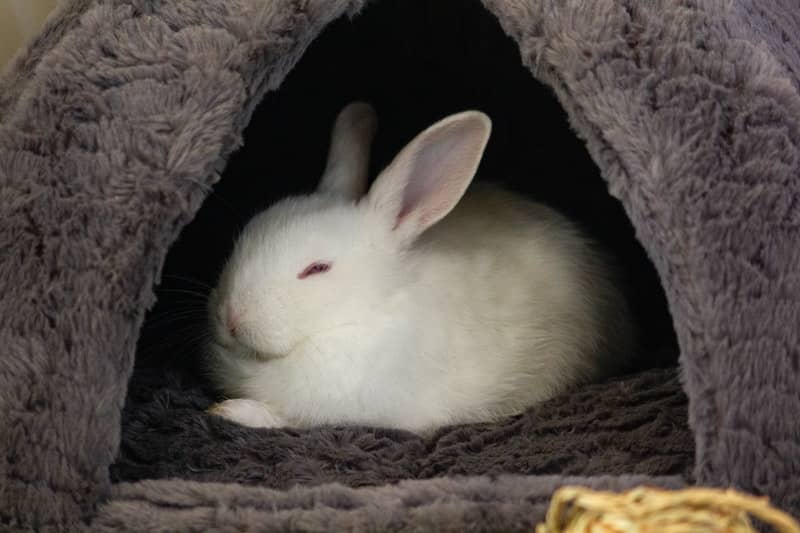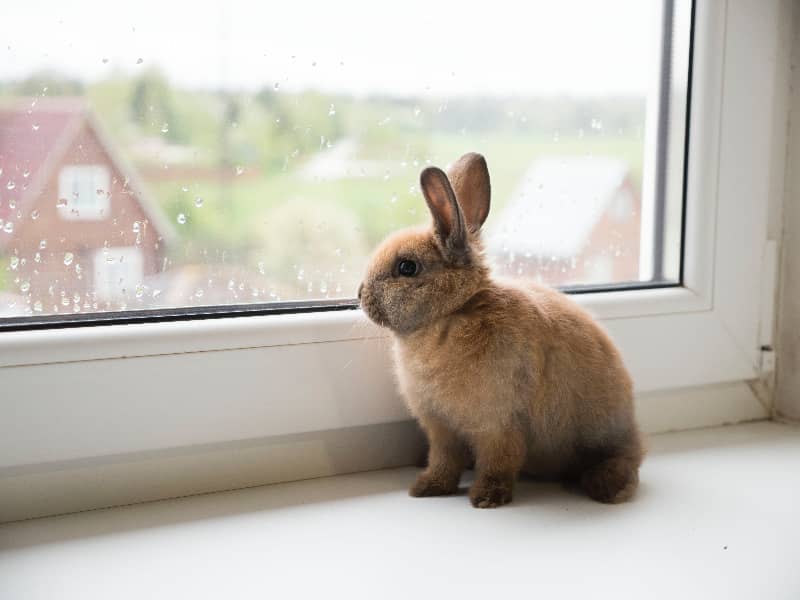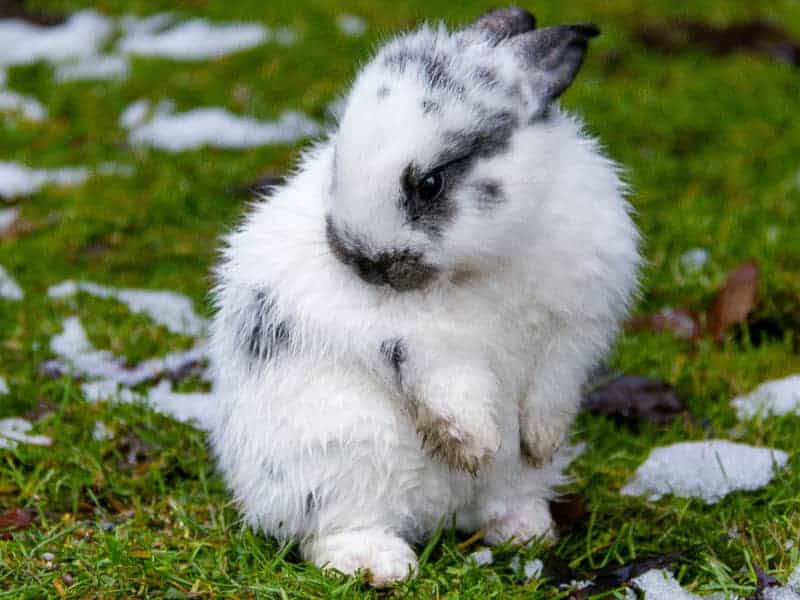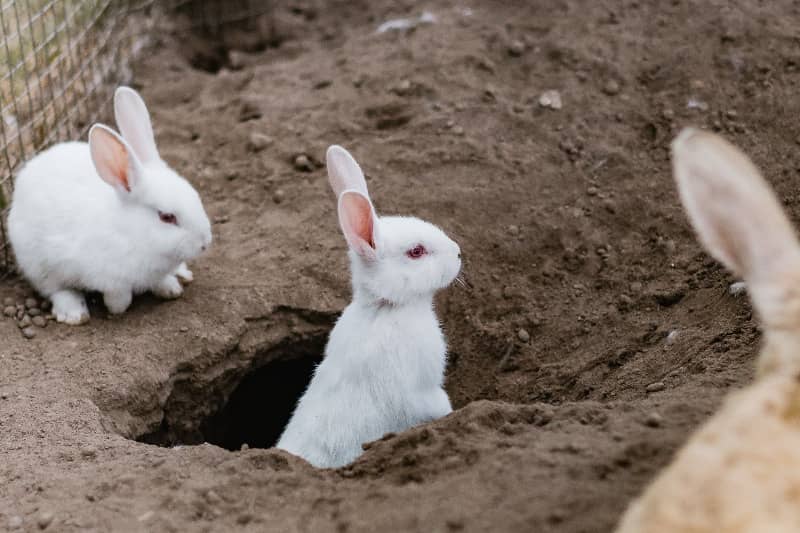
Rabbits like to dig - the rabbit hole
All rabbits like to dig, that's a fact, and if your rabbit doesn't dig, it may be because he hasn't had the opportunity. It is part of the rabbit's nature to dig, so you should give him the opportunity to do so. If you keep your rabbits indoors, then you should provide them with a sufficiently large digging box.
You can build this yourself from plywood boards and fill it with sand, soil or a sand/soil mixture. In outdoor housing, material may be available, as the free run may contain natural soil. Here, however, you must make sure that the rabbits do not dig themselves out of your enclosure unintentionally.
Why rabbits dig
In the wild, rabbits dig so that they can expand their tube system or create new ones. They dig in the soil with their front paws and then fling it away with their hind legs. The dug tubes are kept so narrow that only one rabbit fits into them at a time. In this way, the rabbits ensure that the tube system can also be used as an escape route against larger predators.
Within the tunnel system, the rabbits dig larger areas so that they can pass each other. Thus, it is possible that a large number of rabbits live in a rabbit hole and they can scurry through the corridors there without any problems.
How big can a rabbit hole get?
It is not uncommon for a rabbit burrow to reach a footprint of 100 m². However, this is then a large rabbit family, where many rabbits have dug together. The special thing about an emergence of a rabbit burrow is that several rabbits work on it independently of each other. Nevertheless, they manage with architectural accuracy to let the corridors meet.
In such a large rabbit hole can live up to 50 rabbits. There are always more females than males in a rabbit hole. The hierarchy is clearly defined, both among the females and the males. The boss in the rabbit hole is usually the biggest, oldest and heaviest of the boys. The younger males must submit to him or leave the burrow.
These males then live until the next mating season mostly alone on the surface of the earth and with a little luck can themselves poach a few females from another rabbit burrow. With these then a new burrow is founded and so also an inbreeding is avoided.
How many entrances and exits does a rabbit hole have?
A large rabbit hole can have up to a dozen or more exits. There is always one main entrance, which is usually easy to see and there is almost always a pile of earth right next to the entrance. The other entrances are usually hidden and therefore much more difficult to recognize. The rabbits usually dig such entrances under bushes or shrubs.
These entrances could be called distress entrance/exit, because they slope almost vertically and a rabbit can easily fall into them when escaping. No problem for a healthy rabbit, but almost impossible for an enemy. The main entrance, on the other hand, is created only with a slight slope, so that even the rabbit opa can walk in and out of there comfortably.
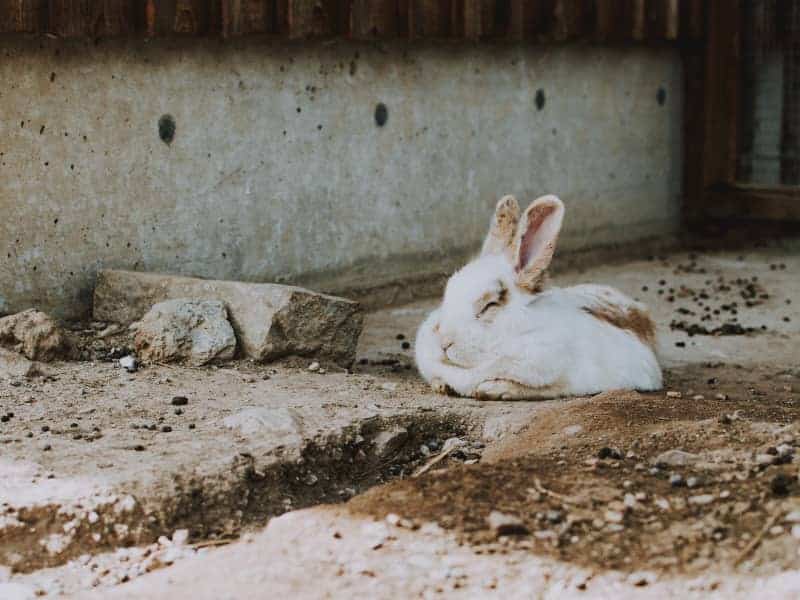
Rabbits dig their living room and nursery
The rabbits also dig rooms to which only a tunnel leads. These living rooms or nurseries are the common rooms of rabbits. Here they spend time together and groom themselves and their conspecifics. Some of these rooms serve as nurseries, where the mother rabbit gets her children and raises and nurses them there.
Here, the hierarchy in the distribution of the nurseries is noticeable. The nests, which are located in the middle of the rabbit hole, are assigned to the dominant female rabbits and lower-ranking ones are driven away from there. The dominant females mark these nests with their scent glands and so the others know that this nest is reserved for another female rabbit.
Rabbit mothers, who are low in the hierarchy, temporarily build nests that are not connected to the rabbit hole. These simple complexes consist only of a tube with a room at the end. There is no escape tunnel or other corridors here. The reason is that this way the mama rabbit can quickly build her nest alone. Another aspect of raising alone is that their children can not get lost in a tunnel system.
Who digs in the rabbit hole?
Here the division of labor is relatively clear. The female rabbits are responsible for most of the digging. A tunnel system is usually created by expanding a litter burrow after the young are large enough to help dig themselves. The dominant male does not participate in the work and the young are also ignored until they reach a certain age.
Only when these are no longer suckled by his partner, he pays attention to them and then these must remain submissive or withdraw. In a rabbit warren, attention is also paid to the number of rabbits. On the one hand, young males are driven out of the burrow more quickly when the number is high, but the number of newborns also decreases when the density is high.
Author

-
Garden animal - A life with nature
Welcome to my animal blog! My name is Dirk and I am happy to take you on my journey through the fascinating world of animals and gardening.
Born 54 years ago, I have had an insatiable curiosity for the animal world around me since childhood. Although I have moved professionally in other industries, my true passion has always been animals and nature. It is remarkable how a small garden has become such an important part of my life.
Many of my fondest memories are associated with the animals that share our home. Whether it's the curious squirrels that scurry across the trees in the morning, the colorful variety of birds that visit our feeders, or the busy bees and butterflies that pollinate our flowers, every moment with them is invaluable to me.
This blog is my contribution to share my experiences, discoveries and insights with like-minded people. Here I will share stories of unforgettable encounters with animals, give tips on gardening and creating wildlife-friendly habitats, and take you on my journeys through nature.
Thank you so much for being here!
Cordial,
Dirk aka garden animal
Last posts
- 27. February 2024PetsVeganes Hundefutter – Grün und Gesund?
- 18. January 2024ChickensOregano für Hühner
- November 27, 2023HamsterDiurnal hamsters
- November 24, 2023HamsterHamster hammock

